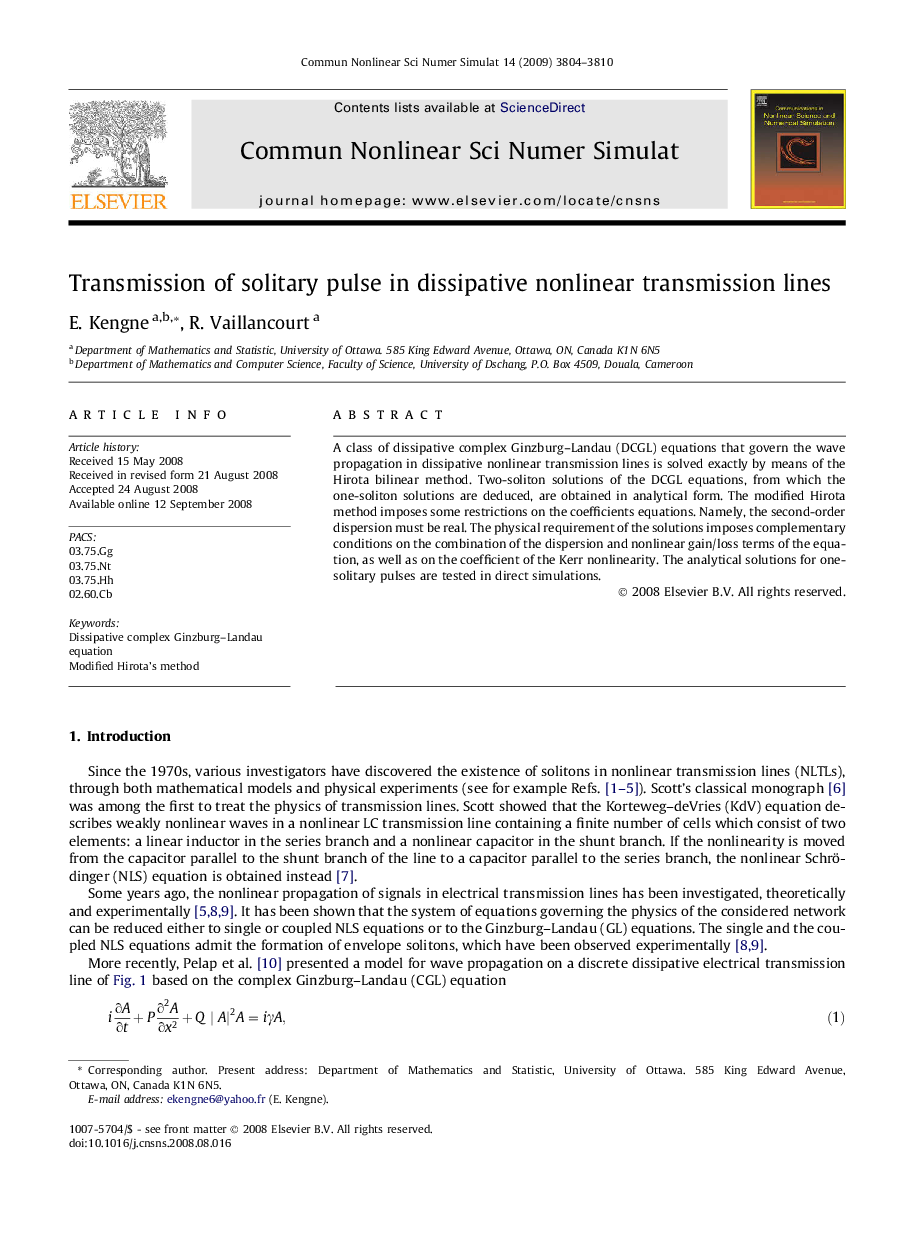| Article ID | Journal | Published Year | Pages | File Type |
|---|---|---|---|---|
| 767501 | Communications in Nonlinear Science and Numerical Simulation | 2009 | 7 Pages |
Abstract
A class of dissipative complex Ginzburg-Landau (DCGL) equations that govern the wave propagation in dissipative nonlinear transmission lines is solved exactly by means of the Hirota bilinear method. Two-soliton solutions of the DCGL equations, from which the one-soliton solutions are deduced, are obtained in analytical form. The modified Hirota method imposes some restrictions on the coefficients equations. Namely, the second-order dispersion must be real. The physical requirement of the solutions imposes complementary conditions on the combination of the dispersion and nonlinear gain/loss terms of the equation, as well as on the coefficient of the Kerr nonlinearity. The analytical solutions for one-solitary pulses are tested in direct simulations.
Related Topics
Physical Sciences and Engineering
Engineering
Mechanical Engineering
Authors
E. Kengne, R. Vaillancourt,
